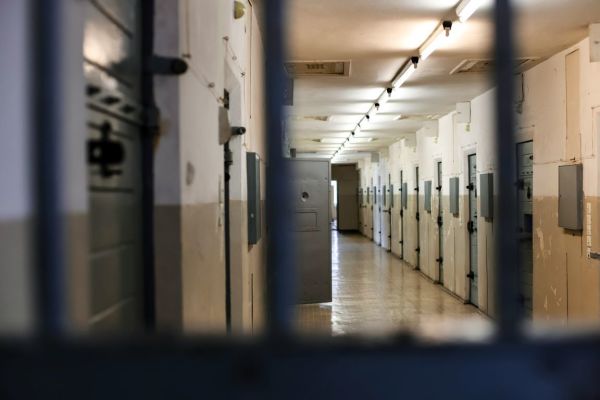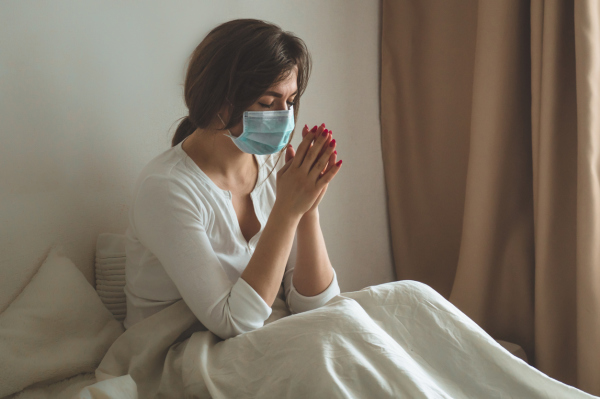'Alarming spike' in COVID-19 cases at nursing homes in July after June drop

Nursing homes in the United States have experienced “an alarming spike” in new COVID-19 cases during July after cases of the virus dropped significantly in June, according to federal data.
A report released Tuesday by the American Health Care Association and National Center for Assisted Living cites recent data by the U.S. Centers for Medicare & Medicaid Services that shows there were 8,628 new weekly COVID-19 cases at nursing homes reported on July 19, the last week of data available.
By comparison, the number of weekly COVID-19 cases at nursing homes fell to 5,468 a month earlier on June 21 after having been as high as 9,072 in late May.
“With the recent major spikes of COVID cases in many states across the country, we were very concerned this trend would lead to an increase in cases in nursing homes and unfortunately it has,” said Mark Parkinson, president AHCA/NCAL, which represents more than 14,000 nursing homes and assisted living communities.
“This is especially troubling since many nursing homes and other long term care facilities are still unable to acquire the personal protective equipment and testing they need to fully combat this virus.”
Weekly reported COVID-19-related deaths at nursing homes in the U.S. have plummeted from just over 3,000 reported weekly deaths in late May. After a slight uptick in recent weeks, there were 1,458 weekly COVID-19-related deaths at nursing homes reported on July 19.
On July 14, Parkinson sent a letter to the National Governors Association warning of another potential for outbreaks in nursing homes and assisted living facilities due to the spike in new coronavirus cases that occurred in several states, a shortage of personal protective equipment and testing delays.
“Given the fact we are several months into the response of this pandemic and the lack of PPE supplies is still an issue is very concerning,” the letter says. “We request governors and state public health agencies to help secure and direct more PPE supplies to nursing homes and assisted living communities, especially N95 masks.”
Parkinson is also calling for Congress to authorize an additional $100 billion for the Department of Health and Human Services relief fund for all healthcare providers impacted by the pandemic.
“Without adequate funding and resources, the U.S. will end up repeating the same mistakes from several months ago,” he stressed. “We need Congress to prioritize our vulnerable seniors and their caregivers in nursing homes and assisted living communities in this upcoming legislation.”
The new report comes as visitation protocols for nursing homes in the U.S. largely vary. Additionally, some state governments have faced scrutiny over their responses to the virus.
In March, many nursing homes and assisted living facilities around the country enacted policies preventing residents from receiving visits from family members.
Many families went months without seeing their loved ones. And in some cases, families were prevented from being with their loved ones when they passed.
“Reopening long term care facilities is important for our residents’ wellbeing and caregivers and providers recognize the importance of visitations of family and friends,” Parkinson’s letter to the NGA reads. “To accomplish this goal, nursing homes and assisted living communities need additional support from federal and state public health agencies in order to protect residents and caregivers.”
The Centers for Medicare & Medicaid published guidance for state and local officials in May on how they should phase nursing home reopenings to allow for visits once nursing homes have had no new cases of the virus for 28 days and are able to provide adequate testing and PPE.
According to AARP, scheduled visits are allowed in most states at nursing facilities that have decided to reopen and have met certain requirements. Policies again vary on whether visits must be outdoors. AARP reports that 10 states only allow compassionate care visits for patients with a terminal diagnosis or in an end-of-life situation.
After seeing a rise in nursing home COVID-19 cases in his state, West Virginia Gov. halted nursing home visits again in his state this week, except for in end-of-life situations.
In New York, there has been much controversy surrounding discrepancies in the state’s figures on the number of people who have died in nursing homes after contracting COVID-19.
With a coronavirus nursing home death toll that was already among the highest in the U.S., the state’s death toll in nursing homes could be an undercount by thousands because it only counts the number of people who died on nursing home property, not those transported to hospitals.
According to The Associated Press, New York’s top health official was grilled by state lawmakers last week and the state has failed to disclose how many nursing home patients died from COVID-19 at hospitals.
The family members of loved ones who died in nursing homes have called for an independent investigation into Gov. Andrew Cuomo administration’s coronavirus response.
Earlier this year when the pandemic began, Cuomo ordered nursing homes to house COVID-19 positive patients, a decision that has received much scrutiny.
According to the state’s own numbers, more than 6,600 patients have died in nursing homes after contracting COVID-19.
Follow Samuel Smith on Twitter: @IamSamSmith
or Facebook: SamuelSmithCP





















